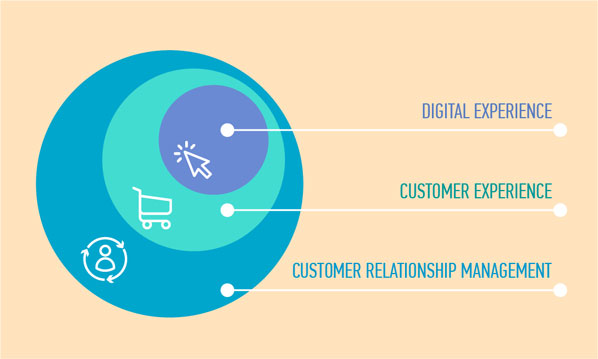The boundaries between digital and physical are now increasingly blurring, especially in B2C with its intense pace and volume of customer interactions that spill over multiple channels.
As a large portion of these B2C interactions happen in the absence of a sales representative as such, customers’ independent experience with brands becomes everything. Still, as B2C enterprises are trying to find their balance in this digitally disrupted world, the risk of falling into the brand new version of Levitt’s marketing myopia is pretty high.
Marketing myopia revisited
Half a century earlier, Theodore Levitt coined marketing myopia as a catchphrase standing for a company’s inability to recognize customer needs beyond the narrow focus on what to sell, not to whom and how.
Today, it can be reinterpreted as a common misunderstanding that customers predominantly use one channel, either traditional or digital. But the stats show it’s the age of continuous service now. With 90 (!) percent of customers expecting consistent cross-channel interactions with brands (SDL via DM News), 61 percent still fail to switch between channels successfully (Aspect). As B2C audiences grow ever more impatient, any case of interrupted communication means losing a potential customer as well as reducing the lifetime value of the existing customer base by 30 percent (IDC).
This cracks open an unexpected question – is it really about disintegration of departments that are supposed to be mutually responsible for the holistic customer experience but instead never see anything beyond their narrow area of responsibilities? As a result, there are 2 traps to fall into:
Trap No. 1 – placing too heavy an emphasis on digital-less customer experience such as in-store experience, offline customer service, delivery, etc. and overlooking digital whatsoever.
Trap No. 2 – focusing on the digital channels of the day (web, mobile, wearables, etc.) but never considering other departments as instrumental in customer experience.
Comes as a surprise but avoiding these traps includes realizing that…
…Every touchpoint matters, and CRM is their meeting place
Digital marketers are all marketers, but not all marketers are digital, right? Also, marketers per se have only a limited control over the customer lifecycle, frequently with no visibility into stages other than acts of purchase. Who owns customer experience then?
The problem mostly lies in the misalignment of goals and missions when everyone acts independently without a single silo that could connect all these disintegrated layers. Meanwhile, end-to-end customer experience management takes cross-department coordination, which belongs to a larger discipline of software-enabled Customer Relationship Management (CRM).

As proved by our most recent customer experience management observations, customers have become channel-agnostic. That’s said, it’s only possible to meet their expectations of consistent cross-channel experience when its management overcomes either ‘physical’ or ‘digital’ bias and makes pinpointed changes at every touchpoint possible. Needless to say, every channel-specific experience is each only a fraction of this picture.
About the Author
Darya Yafimava is Customer Experience Observer at ScienceSoft, a software development and consulting company headquartered in McKinney, TX. With her 4+ years in business and tech writing, Darya has contributed to a number of tech and business platforms with a special focus on CRM/CXM and retail IT.




